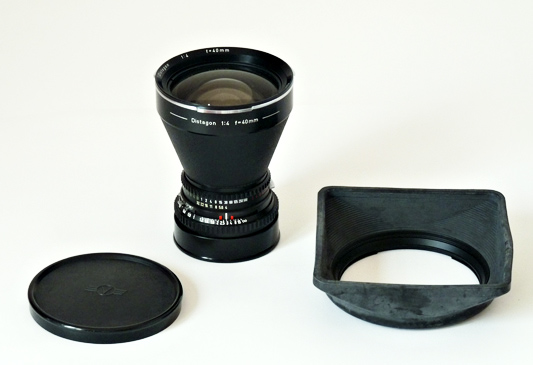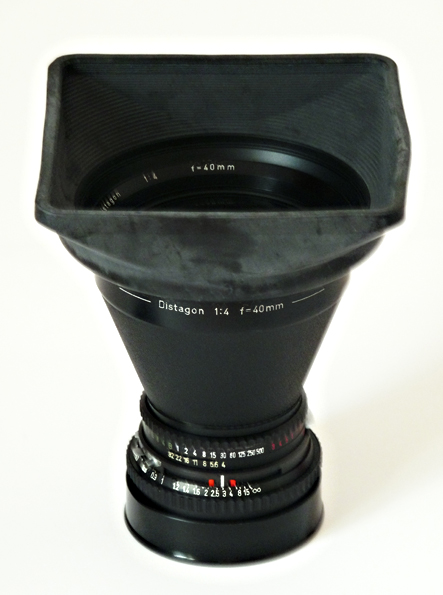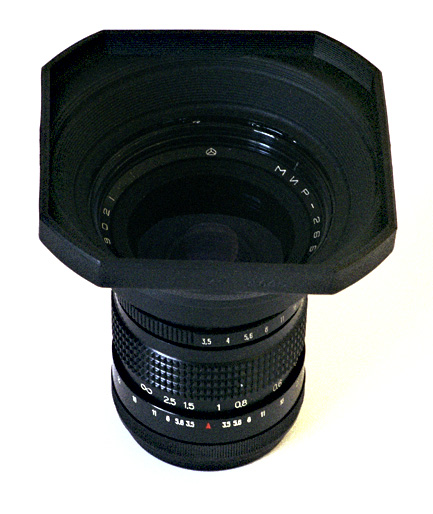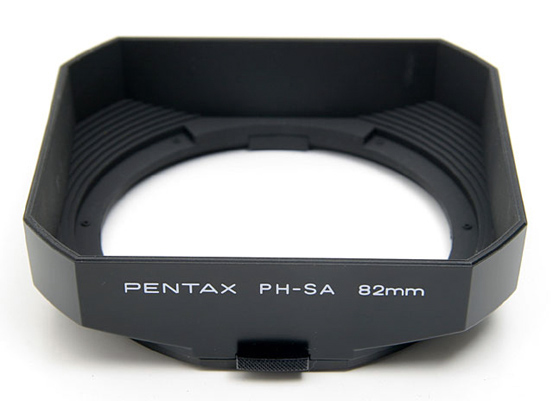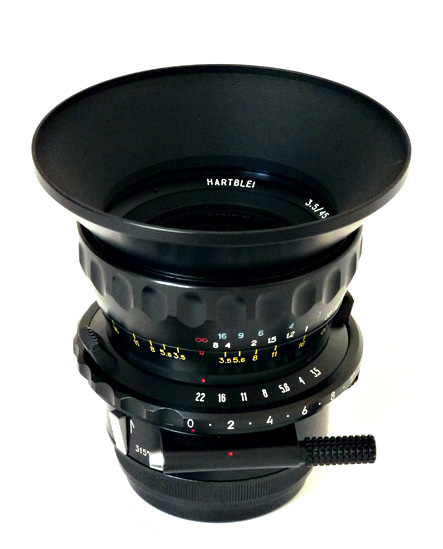by TRA
Lens Hoods
(Shades) for Pentacon Six Lenses
Part
1
The “Problem”

[C425-13]
The Roman amphitheatre at Tarragona, Spain, with the
Mediterranean in the background.
Pentacon Six with Arsenal Mir-69 45mm lens with no lens
hood.
Fuji NPC160 1/500 f/22
The sun was definitely in the “wrong” place when I arrived at this amphitheatre one February near mid-day. It was almost within the image, which I have cropped to improve compostion and exclude the greatest flare. However, the hexagonal shape of the aperture blades is clearly visible within the shot.
Of course, there may be artistic reasons for leaving flare in an image. We have become accustomed to seeing flare in some images, and may therefore even expect it in some circumstances. In fact, Photoshop even has a tool to enable users to add flare to their images. However, we definitely do not see the shape of a lens diaphragm when we look at a scene, even if direct sunlight may cause flare, which we often try to compensate for by shading our eyes. It is therefore natural to seek to obtain images without flare, often achieving this by shading the lens. I have never found a lens hood or shade for the rare Mir-69 45mm ultra wide angle lens.
The Solution
To get the maximum contrast from any lens, non-image-forming light should be kept from reaching the front of the lens. For instance, the sun may be to your left and just forward of the front of the camera. It is not in the image, but direct sunlight is striking the front of the lens. Some of it will penetrate all of the subsequent lens elements and bounce around within the mirror box (the “throat” of the camera). A properly-designed matt mirror box will prevent the light within the mirror box from bouncing back onto the film and degrading the image. To achieve this, a Kiev 60 needs additonal “flocking” – see here. The Pentacon Six does not require additional flocking in my experience.
But even with an optimal mirror box, the unwanted light within the lens elements will degrade the image. This is not a defect with the Pentacon Six or its lenses; it is a fact of optical life, with any camera and any lens. That is why all the top manufacturers recommend that photographers always use a suitable lens hood (UK English) or lens shade (US English).
In this section we will look at hoods (shades) for some lenses with the Pentacon Six mount, and plan to increase the number of lenses included over time.
Lens hoods are particularly important for two groups of lenses:
- wide-angles
- zooms.
- For wide-angle lenses it is extremely difficult to design a lens hood that is effective without intruding into the edges or corners of the image.
- For zoom lenses, a hood that does not vignette at the wide-angle end will not shade to the maximum at the long end of the zoom.

[C309_5A]
The Hasselblad compendium shade on the 600mm Arsenal mirror lens. Here it is extended to the maximum extent and in most circumstances this would provide more than adequate shading for the lens. However, when shooting against the light, more precise shading is obtainable by adding a suitable mask to the front of the shade. Here you can see the masks for 120-150mm and 250mm lenses (according to Hasselblad’s calculations). It would not be difficult to make masks for other focal lengths. The bar at the bottom of this shade has markings for a range of focal lengths, starting at the ultra-wide 40mm. You can read more about this shade here. Many users speak highly of LEE compendium lens hoods and filters, although I have no personal experience of these. A web search will soon reveal more information and suppliers.

